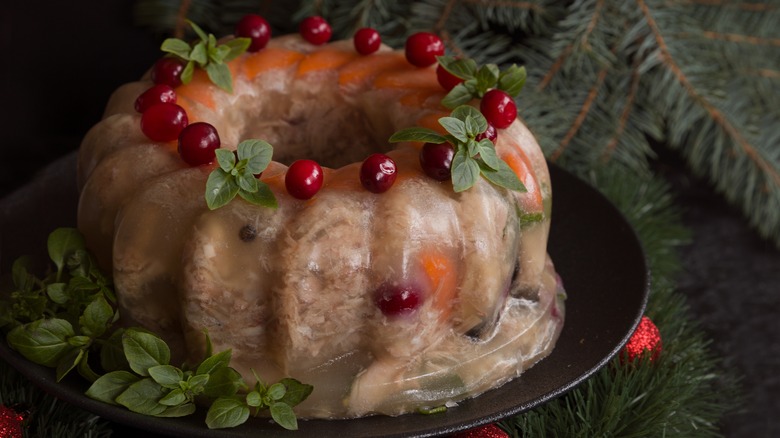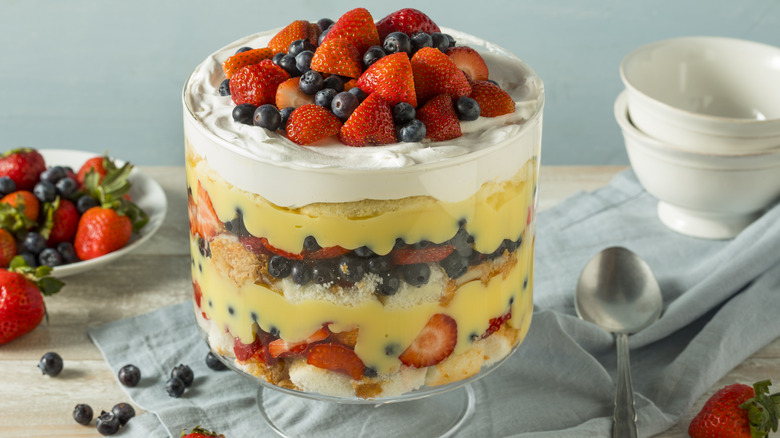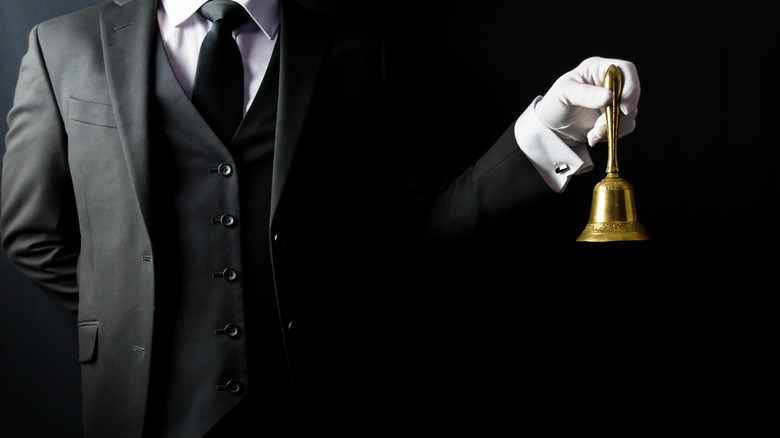Meal Courses Were Invented To Solve A Distinctly Victorian Issue
When you think of a Victorian dinner party, what do you imagine? Maybe a slightly stuffy affair beneath a chandelier, with footmen serving multiple courses? After all, most of us have watched that scene play out in various period dramas. Yet while there's some truth to this, the classic three-course meal didn't actually become popular until the middle of the Victorian era. Before society hostesses jumped on the whole sequential course bandwagon, people were dining quite differently.
Up until the 1850s, people tended to eat "service à la française," meaning "service in the French style" (via European Journal of Food Drink and Society). This involved multiple courses being brought to the table all at once on platters and tureens, including soups, fish, meats, stews, and puddings, with diners helping themselves. Yet service à la française wasn't without its pitfalls.
According to BBC News Magazine, etiquette stated that you couldn't eat until Her Majesty had finished. So this meant guests had to wait until she'd helped herself to the various courses on the table — but as Victoria was known for having quite the appetite, there wasn't always enough left to feed everyone by the time she was done.
Three-course meals became a solution for hungry mouths and cold food
According to the European Journal of Food and Drink Society, service à la française gradually fell out of favor in Britain between 1850 and 1880. And as stated by On The Gas, it was replaced by "service à la russe" ("service in the Russian style"), the custom of offering up sequential courses. With this style, food was brought into the dining room and then portioned onto each person's plate by footmen.
Typically, a three-course service à la russe meal might start with a soup like mock turtle, followed by a meat main such as roast pheasant or spring chicken (via The Victorian Emporium). Compotes, marbled jellies, and tarts were popular dessert choices, including an ice cream bombe – a predecessor of the ice cream cake, per Food Timeline.
When Queen Victoria gradually introduced service à la russe to royal banquets, the rest of the upper classes followed suit. There are various reasons for this, among these being that many are left more hungry and with cold food, no less (via On the Gas). After all, if every course is brought to the table at once, then pretty soon, that lobster sauce is going to end up lukewarm. Likewise, other foods might end up not being cool enough, for instance — the dinner party disaster of melted raspberry ice cream.
But with service à la russe, you could rely on each course being served at the perfect temperature. According to On the Gas, not only did this have the benefit of making food taste a lot better, but it also showed off the skills of each household's chef or cook to the maximum.
Why sequential dining matched Victorian values
According to The Johnston Collection Museum, multiple courses were also seen as less messy and more elegant than service à la française — people weren't serving themselves, and tablecloths stayed cleaner, creating a nicer aesthetic. As explained by The Victorian Emporium, service à la russe was just better suited to the more etiquette-focused values of Victorian society. It demonstrated a break away from previous dining habits into a more orderly and formal way of socializing.
Finally, multiple courses became a status symbol and a bit of an unspoken brag. Because, unlike service à la française, you just couldn't pull off serving sequential dishes at a big dinner party unless you had enough footmen. So it was a way of showing that you were affluent and understood increasingly complex codes of dining etiquette, like the right silverware to use. According to The Victorian Emporium, by the time service à la russe became the norm, it wasn't unusual for as many as 12 or 13 courses to be served at formal meals.
But now that most of us aren't hosting dinner parties in country mansions, why have the traditional three courses stayed popular? Maybe it's because that whole combo of appetizer, entrée, and sweet treat just offers a really satisfying balance. And thankfully, there's no need to hire fancy footmen in order to enjoy it.


